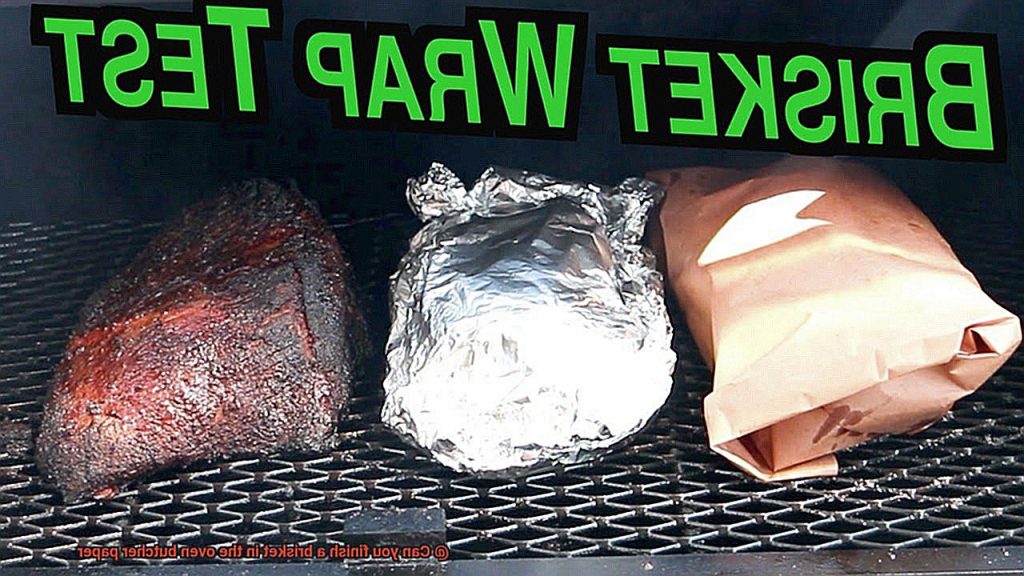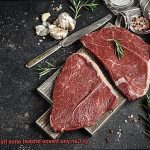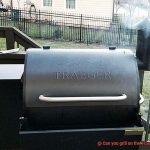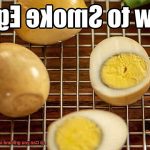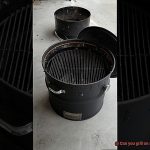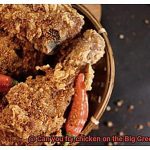Brisket, the holy grail of barbecue, holds a sacred place in the hearts of meat enthusiasts everywhere. The masters of the pit have spent countless hours perfecting their craft, tending to their smokers and unveiling secret rubs, all in pursuit of that melt-in-your-mouth texture and flavor. But what if we told you there’s a way to achieve exceptional results by finishing your brisket in the oven, with a little help from butcher paper?
In this blog post, we’re diving into the art of cooking brisket in the oven using butcher paper. This technique has the power to elevate your brisket game to new heights. While some may argue that low and slow smoking is the only path to brisket nirvana, we’re here to challenge that notion. The oven can be your secret weapon for juicy, tender slices of meat, offering convenience and consistent temperatures.
So, grab a seat, fire up your oven, and let’s explore how butcher paper can transform your brisket into a mouthwatering masterpiece. Whether you’re an experienced pitmaster looking to expand your horizons or a curious beginner eager for a culinary adventure, we’ve got you covered.
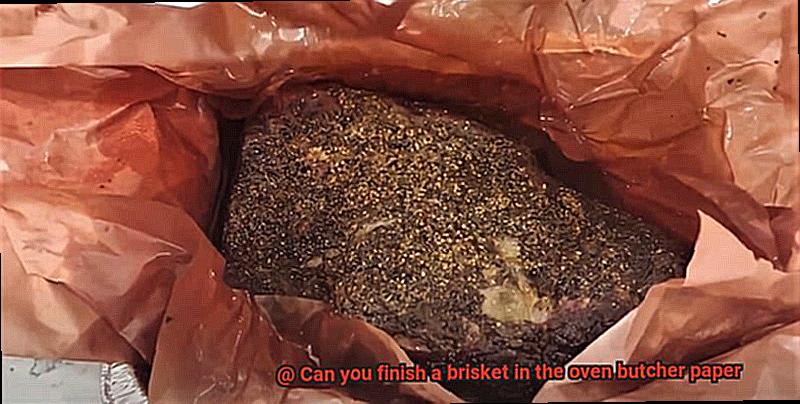
In this post, we’ll uncover the benefits of finishing a brisket in the oven using butcher paper. We’ll guide you through each step of the technique and share pro tips that will ensure your dish emerges from the oven with an irresistible bark, succulent tenderness, and flavors that will leave your guests begging for more.
Without further ado, let’s unlock the secrets to achieving brisket perfection within the cozy confines of your own oven – all with a little help from our friend: butcher paper.
Contents
What is Butcher Paper?
In the world of grilling, the right tools can make all the difference. Among the rising stars in recent years is butcher paper. But what exactly is this culinary marvel, and why should it be a staple in your grilling arsenal? Join us as we explore the wonders of butcher paper, its unique properties, and how it can transform your cooking experience. Get ready to unleash the full flavor potential of your meats.
Butcher Paper Unveiled:
Butcher paper is no ordinary wrapping material. This heavyweight, food-grade paper is designed specifically for handling meat products. Its durability and strength make it perfect for protecting and preserving meats during transportation and storage. But what sets it apart from other options?
- Breathability: Unlike plastic or aluminum foil, butcher paper allows air to circulate around the meat. This crucial feature prevents the growth of harmful bacteria while maintaining the perfect moisture balance within the cuts. The result? Succulent and tender meats that melt in your mouth.
- Moisture Resistance: Treated with a special moisture-resistant coating, butcher paper remains strong and intact even when in contact with meat juices. Say goodbye to soggy messes and flimsy wraps that fail to contain flavor.
- Aesthetic Appeal: Beyond its functionality, butcher paper adds a touch of rustic charm to your grilling masterpiece. As it cooks, the paper develops a mesmerizing patina, enhancing the presentation of your smoked meats like a work of art.
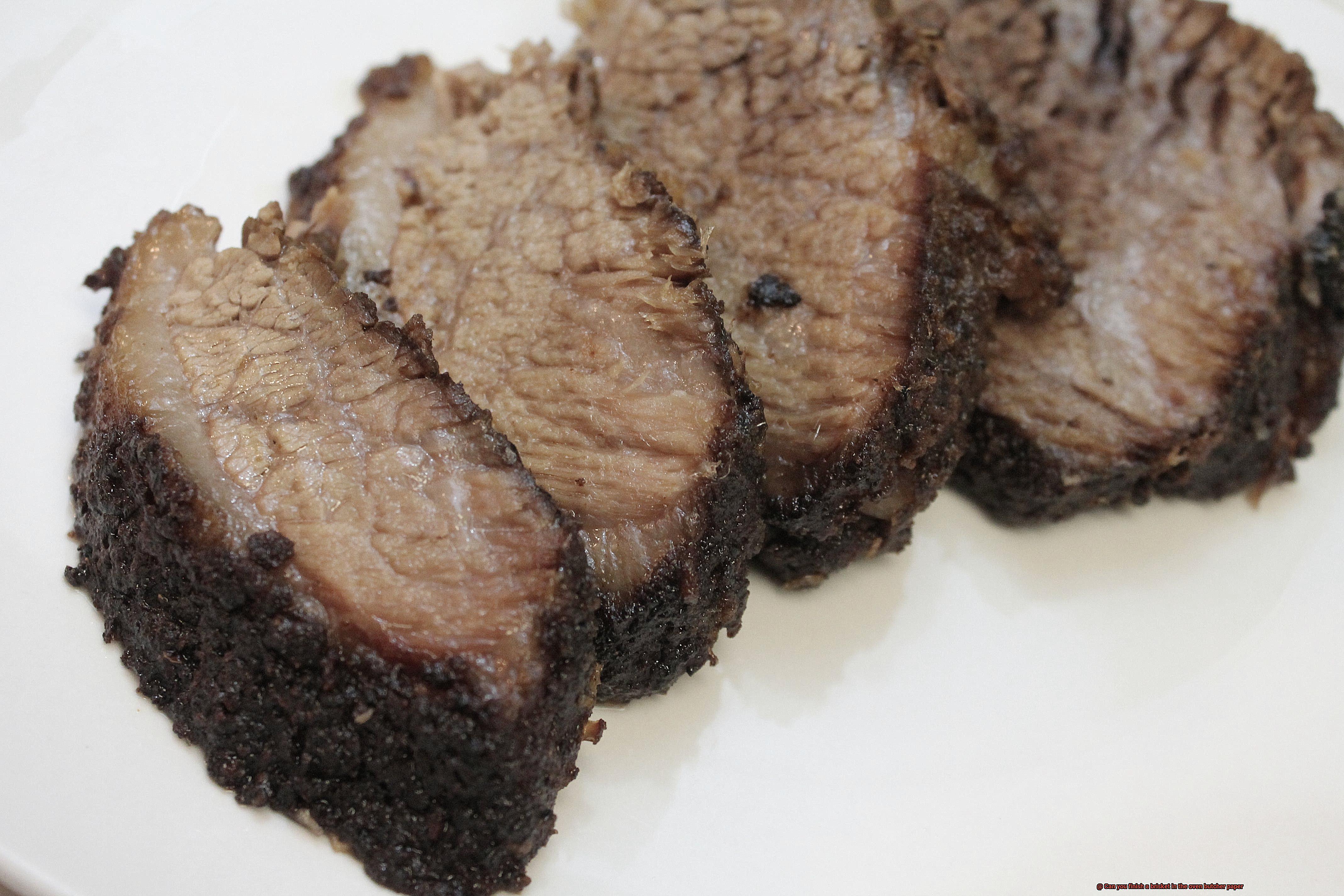
Mastering Brisket with Butcher Paper:
Now that we’ve uncovered the wonders of butcher paper let’s explore how it can revolutionize your brisket cooking process.
- Preparing the Brisket: Begin by smoking or grilling your brisket to infuse it with smoky flavor and develop a delectable bark on the exterior.
- Wrapping in Butcher Paper: Once the initial cooking is complete, it’s time to wrap your brisket in butcher paper. This technique creates a controlled cooking environment that ensures even heat distribution and optimal moisture retention. Preheat your oven to around 225°F (107°C), place the wrapped brisket on a baking sheet or roasting pan, and let it cook slowly for several hours.
- Temperature Monitoring: To achieve brisket perfection, use a meat thermometer to monitor the internal temperature regularly. Aim for a range of around 195°F (90°C) to 205°F (96°C) for a beautifully cooked brisket.
Benefits of Using Butcher Paper for Brisket
This heavyweight, food-grade paper is a game-changer when it comes to finishing a brisket in the oven. Once you try it, you’ll never go back to your old wrapping methods.
So, why should you use butcher paper for your brisket? Let me break it down for you:
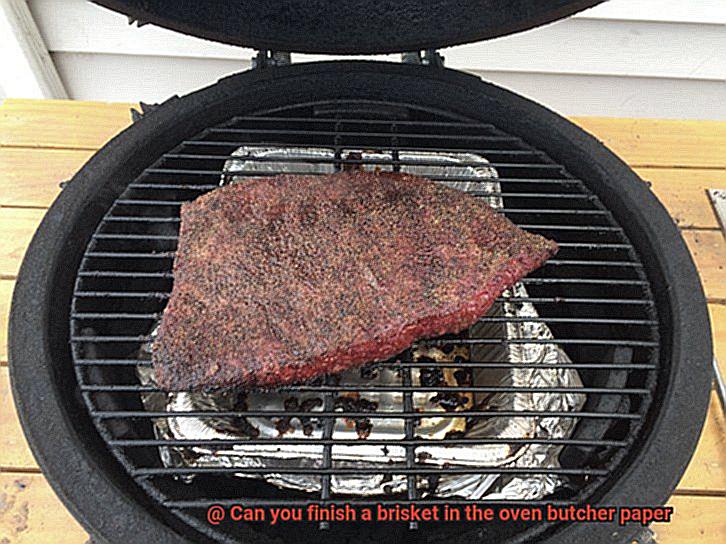
- Moisture retention: Keeping your brisket moist and juicy is crucial, and butcher paper is the key. Unlike aluminum foil, which can trap moisture and make your meat soggy, butcher paper allows for just the right amount of airflow. Your brisket stays moist without becoming waterlogged.
- Bark perfection: The coveted bark – that beautiful crust that forms on the surface of the brisket during cooking – is easily achieved with butcher paper. Its breathable nature allows for optimal smoke and heat circulation, resulting in a perfectly caramelized and smoky bark that will have everyone begging for seconds.
- Texture matters: Butcher paper strikes the perfect balance between moisture retention and evaporation, giving you a tender and moist final product. It absorbs some of the rendered fat and meat juices, preventing them from pooling around the brisket and making it greasy. The result? A melt-in-your-mouth texture that will have you coming back for more.
- Heat control: Cooking a brisket in the oven can be tricky when it comes to controlling the heat. Butcher paper acts as an insulator, protecting your brisket from direct heat exposure while still allowing for even cooking. Say goodbye to burnt edges and hello to a perfectly cooked brisket every time.
- Eco-friendly: If you care about the environment, then butcher paper is the way to go. Unlike aluminum foil, which adds to waste and takes forever to decompose, butcher paper is biodegradable and eco-friendly. Enjoy your delicious brisket guilt-free, knowing that you’re not harming the planet.
- Easy peasy: Wrapping your brisket shouldn’t be a hassle. Butcher paper is lightweight and easy to handle, making the wrapping and unwrapping process a breeze. No more struggling with heavy foil or plastic wrap – with butcher paper, you’ll be a wrapping pro in no time.
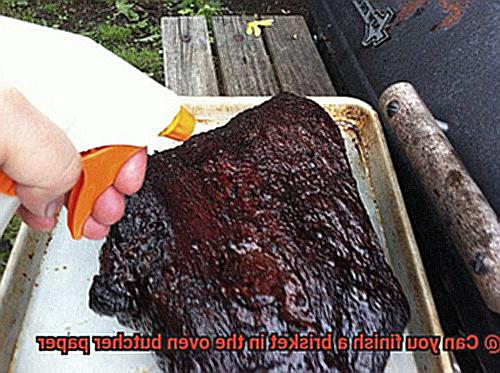
Step-by-Step Guide to Finishing a Brisket in the Oven with Butcher Paper
Take your brisket to the next level with this step-by-step guide to finishing a brisket in the oven with butcher paper. Get ready to elevate your cooking skills and impress your friends and family with a perfectly cooked, tender, and flavorful brisket.
- Preheat the oven: Start by preheating your oven to 225°F (107°C). This low and slow cooking method is crucial for achieving a tender and flavorful brisket.
- Prepare the brisket: Begin by trimming any excess fat from the brisket, leaving about ¼ inch of fat on the surface. This will prevent the meat from drying out during cooking. Generously season the brisket with your favorite dry rub, ensuring that all sides are coated.
- Wrap in butcher paper: Butcher paper is a game-changer because it allows for better airflow than foil, resulting in a crispy bark on the outside of the meat. Take a large sheet of butcher paper and tightly wrap it around the seasoned brisket. Fold and tuck the edges securely to seal in the moisture.
- Place in a roasting pan: Set the wrapped brisket in a roasting pan, fat side up. As it cooks, the fat will render down, basting the meat and keeping it moist and tender.
- Cook in the oven: Carefully transfer the roasting pan with the wrapped brisket into the preheated oven. Cook for approximately 1 hour per pound or until the internal temperature reaches 195°F (90°C). This slow cooking process allows collagen breakdown, resulting in a tender and juicy brisket.
- Rest and slice: Once cooked, remove the brisket from the oven and let it rest in the butcher paper for about 30 minutes. This resting period allows the juices to redistribute throughout the meat, ensuring maximum flavor and tenderness. After resting, carefully unwrap the brisket and slice it against the grain for optimal tenderness.
- Serve and enjoy: Plate up those beautifully cooked slices and serve them alongside your favorite BBQ sauce or accompaniments. The finished brisket should be juicy, flavorful, and tender, with a deliciously crispy bark on the outside.
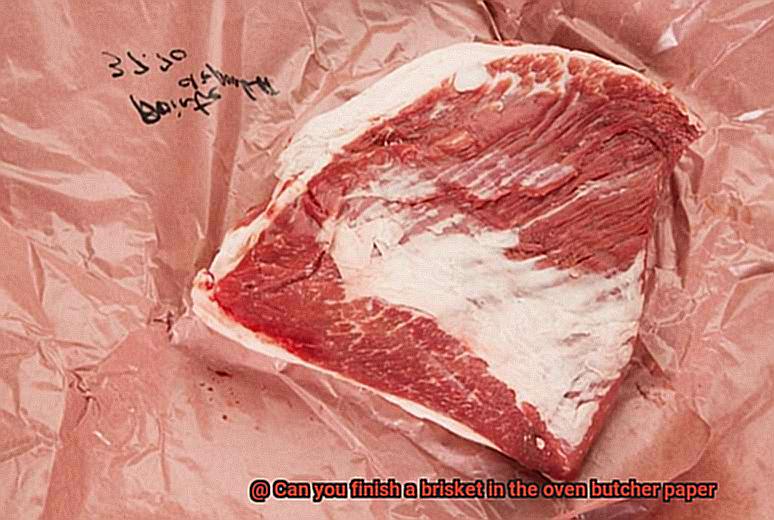
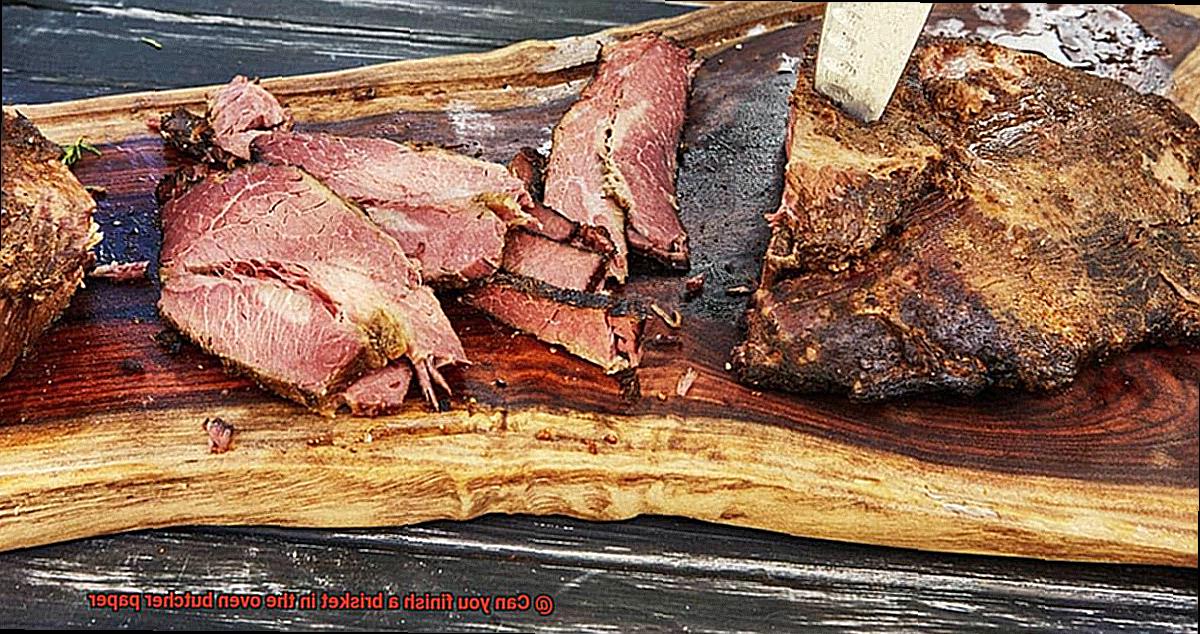
Tips and Tricks for Successful Oven-Finished Brisket
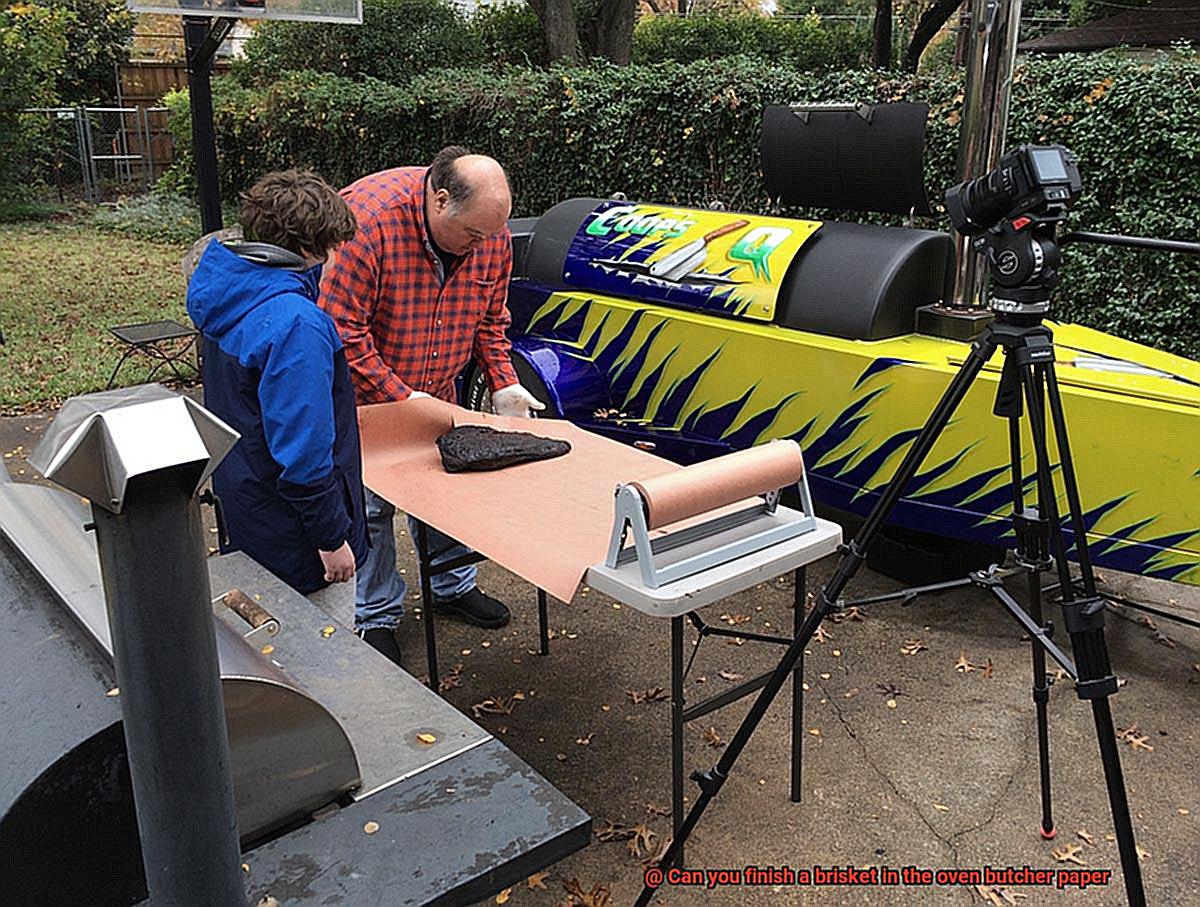
Fear not. With the right techniques, you can achieve mouthwatering results by oven-finishing your brisket using butcher paper. In this article, we’ll share valuable tips and tricks to help you become a pro at creating delicious briskets right in your own oven.
Prepare the Brisket:
Trim excess fat from the brisket for even cooking and tenderness. Season it well with a rub or marinade of your choice to enhance its flavor. Let the flavors meld by allowing the brisket to rest for several hours or overnight.
Proper Wrapping Technique:
Wrap the brisket tightly in butcher paper to create a seal that traps in moisture. No gaps, no loose ends. This ensures juicy meat throughout the cooking process.
Maintain a Low and Consistent Temperature:
Set your oven to a low temperature, around 225°F (107°C), and monitor it closely. Slow and steady is the key. The collagen in the meat breaks down gradually, resulting in a tender brisket.
Add Moisture:
Place a water pan or tray underneath the brisket while it cooks to prevent drying out. Evaporating water creates steam, keeping the meat moist and tender.
Cook Time:
Be patient. Briskets need several hours to become tender and flavorful. Plan for at least 1 hour and 15 minutes per pound of meat, but be prepared for variations based on your oven and brisket size.
Check Internal Temperature:
Use a meat thermometer to ensure your brisket is perfectly cooked. Insert it into the thickest part of the meat without touching the bone. The ideal temperature is around 195°F (90°C). Once reached, remove it from the oven.
Understanding Internal Temperature Requirements
When it comes to creating the perfect grilled or oven-cooked brisket, understanding the internal temperature requirements is essential. The internal temperature of a brisket plays a crucial role in determining its doneness and tenderness. Here are some key points to keep in mind:
- Optimal Temperature Range: The general consensus among experts is that a fully cooked brisket should reach an internal temperature of 195°F to 205°F. This temperature range ensures that the collagen in the meat has had enough time to break down, resulting in a tender and flavorful brisket.
- Personal Preferences: While the recommended temperature range provides a good starting point, it’s important to note that different cooks may have varying preferences. Some prefer a slightly lower temperature for a more medium-rare texture, while others may cook it longer for a more well-done result. Experimenting with different temperatures can help you find your perfect level of doneness.
- Using an Instant-Read Meat Thermometer: To accurately measure the internal temperature of your brisket, invest in an instant-read meat thermometer. This handy tool allows for precise readings without compromising the juiciness of your masterpiece. Insert the probe into the thickest part of the brisket, avoiding any bones or fat that could throw off your reading.
- Oven-Finishing with Butcher Paper: Oven-finishing with butcher paper can help retain moisture and create a tender brisket. However, it’s important to note that using butcher paper doesn’t eliminate the need to monitor internal temperatures. The paper regulates heat distribution and prevents excessive drying out, but you still need to ensure that your brisket reaches the desired level of doneness by monitoring its internal temperature.
- Size and Cut Variations: Different cuts or sizes of brisket may require adjustments in cooking time and internal temperatures. Smaller or thinner pieces of brisket may cook faster and reach the desired temperature sooner. It’s important to keep an eye on your thermometer and make any necessary adjustments to ensure that your brisket is cooked to perfection.
Comparing Traditional Smoked/Grilled Brisket to Oven-Finished Brisket
Prepare your taste buds for a sizzling showdown between traditional smoked/grilled brisket and oven-finished brisket. Brisket, the crown jewel of barbecues, has ignited a fiery debate among enthusiasts. Let’s dive into the smoky world of brisket and explore the mouthwatering differences between these two cooking methods.
Flavor Faceoff:
Traditional smoked/grilled brisket flaunts an unrivaled flavor profile that tantalizes the senses. Slow-cooked over indirect heat with wood chips or charcoal, it emerges with a heavenly smoky taste that dances on your palate. This method orchestrates a symphony of rich and robust flavors that linger long after each bite.
Oven-finishing, while unable to replicate the same intense smokiness, finds its own charm by starting the brisket on a smoker or grill for that signature flavor infusion. It then transitions to the oven, resulting in a milder yet equally delectable taste that will still make your taste buds sing.
Cooking Clash:
Smoking/grilling brisket is an art form that demands time and patience. The meat is pampered with a dry rub, marinated to perfection, and then gently placed in a smoker or grill for several hours at low temperatures. This slow-cooking ritual transforms the meat into tender and succulent perfection while developing the coveted bark – a flavorful crust that leaves you craving more.
Oven-finishing adds a touch of precision to the cooking process, appealing to those who seek meticulous temperature control. After an initial smoky affair on the grill or smoker, the brisket is wrapped in butcher paper and escorted to a preheated oven. This method ensures even cooking, locking in moisture for a juicy finale that will leave you begging for seconds.
Texture and Appearance:
The texture and appearance of both methods showcase subtle differences. Traditional smoked/grilled brisket flaunts a pronounced bark – a mesmerizing caramelized exterior formed under the direct heat and smoke. Within, the meat is transformed into a tender, melt-in-your-mouth masterpiece that commands attention.
Oven-finishing, while still delivering tender results, may offer a softer texture and a less prominent bark. The absence of direct heat and smoke in the oven affects the formation of the crust. However, fear not, for the meat remains moist and flavorful thanks to the butcher paper’s magical moisture-retaining powers.
Conclusion:
The choice between traditional smoked/grilled brisket and oven-finished brisket ultimately boils down to your personal preference and circumstances. Traditional smoking/grilling serves up unmatched smoky flavors and visually stunning barks, perfect for those craving an authentic barbecue experience. Meanwhile, oven-finishing offers precise control over cooking variables while still delivering a mouthwatering, juicy brisket.
Common Mistakes to Avoid When Finishing a Brisket in the Oven with Butcher Paper
If you’re craving that mouthwatering, tender brisket but lack a smoker or grill, fear not. The oven can be your secret weapon. Today, we’ll explore the common mistakes to avoid when finishing a brisket in the oven with butcher paper. So grab your aprons, tongs, and let’s dive right in.
Choosing the Wrong Paper:
Don’t bring a knife to a gunfight. Opt for 100% unbleached butcher paper designed for high-temperature cooking. Regular parchment or wax paper won’t cut it – it may melt or release harmful chemicals. Preserve the integrity of your brisket by using the right kind of paper.
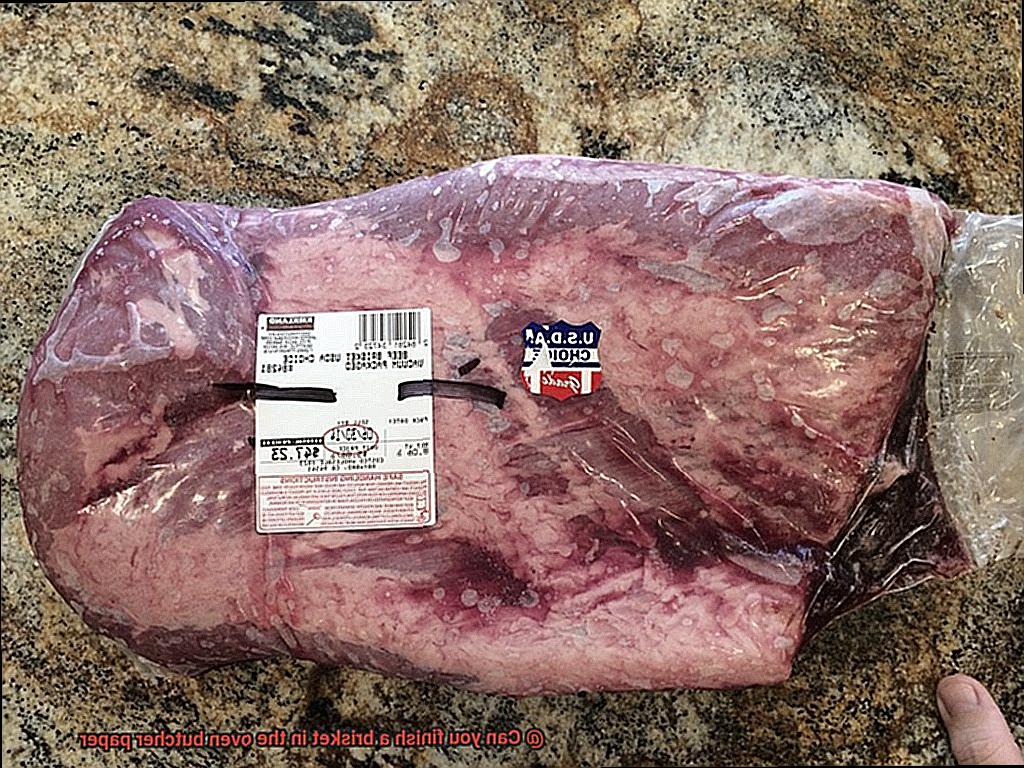
Neglecting Preparations:
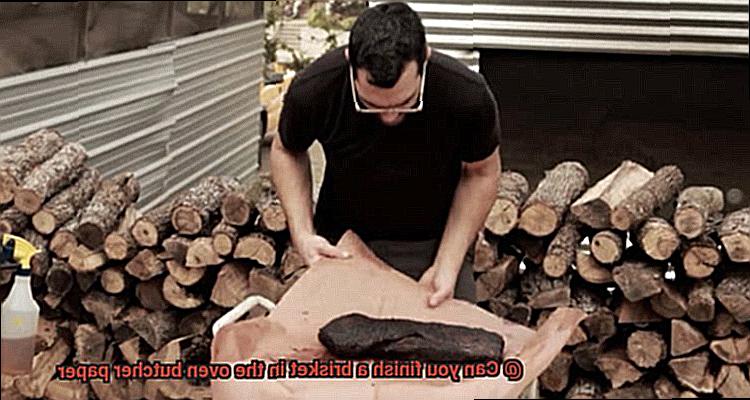
Before wrapping your brisket, prepare it properly. Trim excess fat to prevent greasy, overly fatty bites. Infuse it with tantalizing flavors by generously applying rubs or marinades. Don’t hold back; let the spices work their magic.
Not Allowing Enough Resting Time:
Patience is key when it comes to brisket. After cooking, resist the urge to dive right in. Give your wrapped brisket at least 30 minutes to rest. This allows the juices to redistribute throughout the meat, yielding a more tender and flavorful bite.
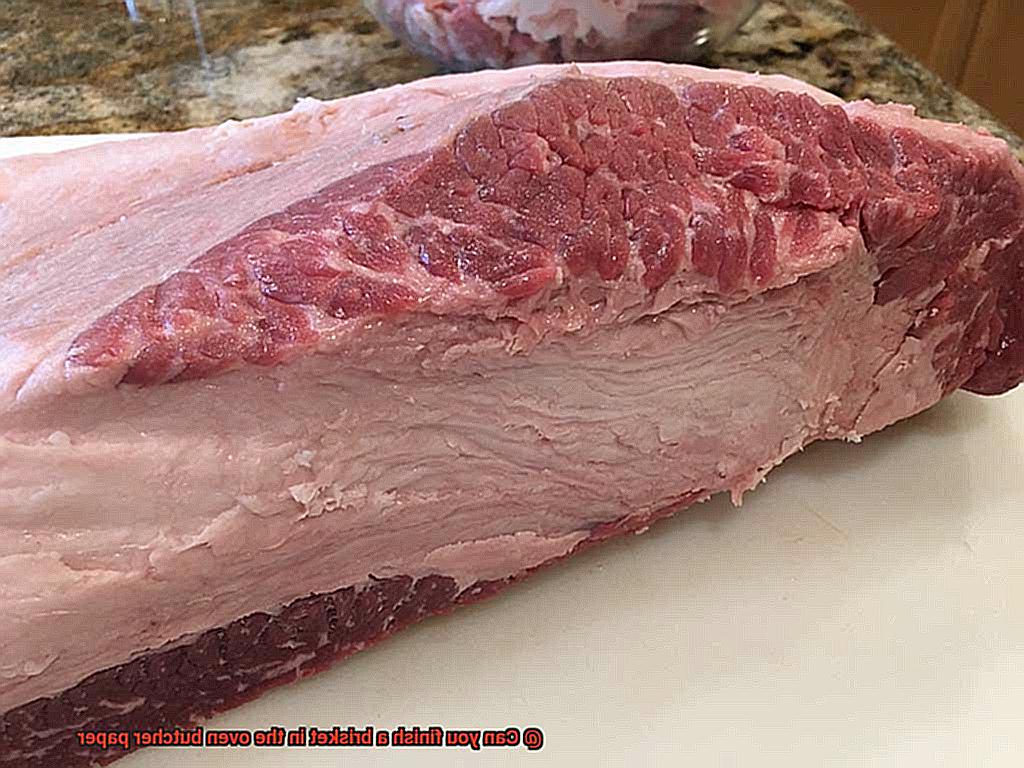
Overcooking Woes:
Achieving the ideal internal temperature is crucial, but overcooking can turn your dreams of juicy perfection into a dry nightmare. Use a reliable meat thermometer and closely monitor the temperature. Aim for tender perfection without veering into tough territory.
Peeking Temptation:
We understand the anticipation, but opening the butcher paper too often during cooking spells disaster. Each peek releases heat and moisture, disrupting the cooking process and resulting in unevenly cooked brisket. Trust the process and resist the urge to peek inside.
-ySatpXZYWo” >
Conclusion
Yes, you can absolutely finish a brisket in the oven using butcher paper.
It’s a technique that has gained popularity among pitmasters and barbecue enthusiasts alike. The butcher paper helps to retain moisture and create a beautiful bark on the outside of the brisket.
So, if you’re looking for a delicious and tender brisket with a mouthwatering smoky flavor, give finishing it in the oven with butcher paper a try.

